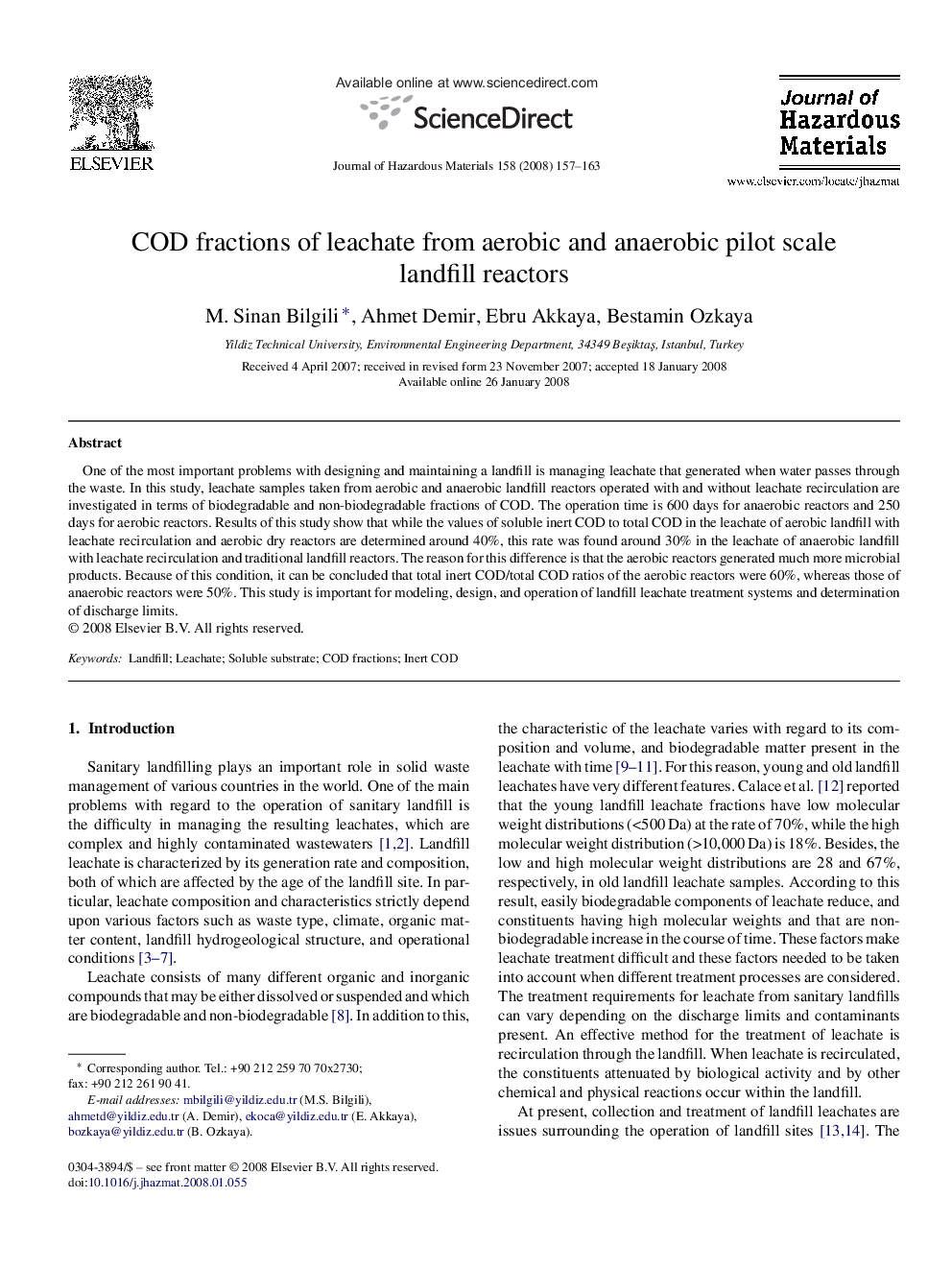| Article ID | Journal | Published Year | Pages | File Type |
|---|---|---|---|---|
| 582859 | Journal of Hazardous Materials | 2008 | 7 Pages |
Abstract
One of the most important problems with designing and maintaining a landfill is managing leachate that generated when water passes through the waste. In this study, leachate samples taken from aerobic and anaerobic landfill reactors operated with and without leachate recirculation are investigated in terms of biodegradable and non-biodegradable fractions of COD. The operation time is 600 days for anaerobic reactors and 250 days for aerobic reactors. Results of this study show that while the values of soluble inert COD to total COD in the leachate of aerobic landfill with leachate recirculation and aerobic dry reactors are determined around 40%, this rate was found around 30% in the leachate of anaerobic landfill with leachate recirculation and traditional landfill reactors. The reason for this difference is that the aerobic reactors generated much more microbial products. Because of this condition, it can be concluded that total inert COD/total COD ratios of the aerobic reactors were 60%, whereas those of anaerobic reactors were 50%. This study is important for modeling, design, and operation of landfill leachate treatment systems and determination of discharge limits.
Keywords
Related Topics
Physical Sciences and Engineering
Chemical Engineering
Chemical Health and Safety
Authors
M. Sinan Bilgili, Ahmet Demir, Ebru Akkaya, Bestamin Ozkaya,
